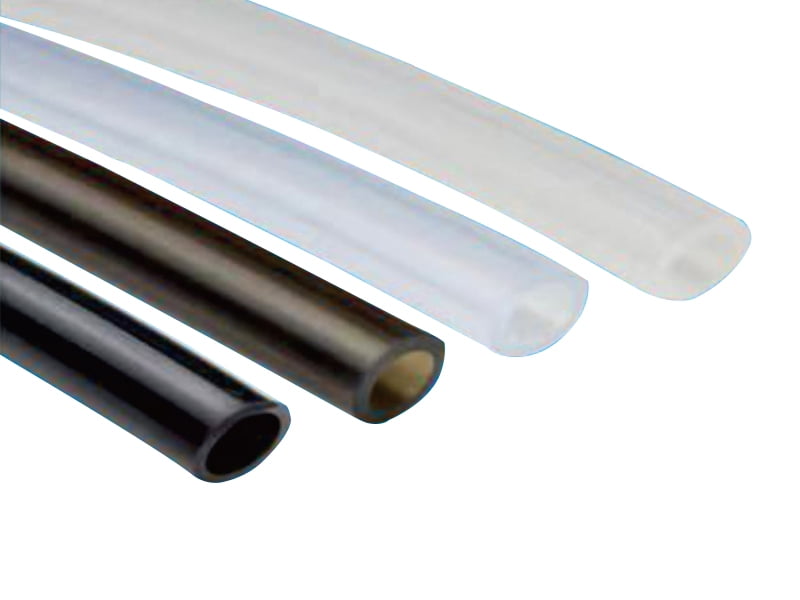Silikonkautschukmanschette: Eigenschaften, Anwendungen und Wartung
Was ist eine Silikonkautschukmanschette?
Eine Silikonkautschukmanschette ist eine flexible, röhrenförmige Ummantelung aus Silikonelastomeren, die Schutz, Isolierung und Umweltversiegelung für verschiedene Komponenten bietet. Diese Manschetten weisen außergewöhnliche thermische Stabilität, chemische Beständigkeit und elektrische Isoliereigenschaften auf und eignen sich daher ideal für anspruchsvolle Anwendungen in zahlreichen Branchen.

Hauptmerkmale mit technischen Daten:
Temperaturbeständigkeit: widersteht ständiger Belastung durch -60 °C bis 230 °C (-76°F bis 446°F), mit intermittierenden Spitzen bis zu 300 °C (572 °F) für spezielle Formulierungen.
Zugfestigkeit: liegt zwischen 8-12 MPa (1160–1740 psi) und bietet eine hervorragende mechanische Haltbarkeit.
Bruchdehnung: typischerweise 400-700 %, wodurch eine erhebliche Dehnung ohne Reißen möglich ist.
Durchschlagsfestigkeit: 18-22 kV/mm, was es zu einem hervorragenden elektrischen Isolator macht.
Shore-Härte: erhältlich in verschiedenen Härtegraden, üblicherweise 30a-70a am Ufer eine Schuppe.
chemische Beständigkeit: beständig gegen die meisten Säuren, Laugen und Lösungsmittel mit einer Schwellrate <15% when exposed to astm oil #3 at 100°c for 70 hours.
flame resistance: meets ul 94 v-0 standards with a self-extinguishing time <10 seconds.
applications of silicone rubber sleeves
the unique combination of properties makes silicone rubber sleeves suitable for numerous industrial and commercial applications:
1. electrical insulation
in high-voltage applications, silicone sleeves provide >1012 Ω·cm volume resistivity, preventing current leakage and arc tracking. they're used for:
bus bar insulation in switchgear (up to 36 kv systems)
transformer lead protection
high-voltage cable joints and terminations
2. thermal management
with a thermal conductivity of 0.2-0.3 w/m·k, these sleeves are employed in:
heat shrink applications for pipe insulation
thermal barriers in automotive exhaust systems
protective covers for industrial heating elements
3. chemical processing
the <0.5% weight change when exposed to harsh chemicals enables use in:
pump and valve stem protection in chemical plants
laboratory equipment shielding
pharmaceutical processing line components
4. medical devices
medical-grade silicone sleeves (usp class vi compliant) serve as:
protective covers for surgical instruments
insulation for electrosurgical tools
gripping surfaces for prosthetics
5. aerospace and defense
meeting mil-dtl-25988 specifications, these sleeves are critical for:
wire harness protection in aircraft (with -65°c to 200°c operational range)
missile guidance system component insulation
satellite wiring protection against atomic oxygen
maintenance and care guidelines
proper maintenance extends silicone rubber sleeve lifespan beyond the typical 5-10 year service life:
cleaning procedures
mechanical cleaning: use lint-free cloths with isopropyl alcohol (ipa) for surface contaminants
ultrasonic cleaning: effective for intricate designs at 40-60 khz with ph-neutral solutions
steam cleaning: suitable for food-grade applications at <140°c steam temperature
storage conditions
maintain storage temperature between 10-25°c (50-77°f)
relative humidity should be <65% rh
keep away from ozone-generating equipment (storage life reduces by 30% at >0.1 ppm ozone)
performance monitoring
conduct annual dielectric tests (minimum 15 kv/mm maintained)
measure hardness changes (alert if shore a variation exceeds ±5 points)
inspect for compression set (replace if >25% after 22h at 175°c per astm d395)
replacement indicators
visible cracks exceeding 0.5 mm depth
permanent deformation >15% of original dimensions
surface resistivity dropping below 1010 Ω/sq



 English
English

